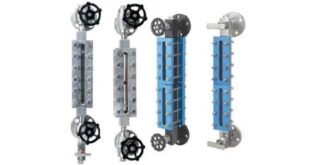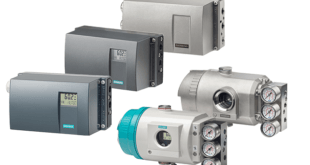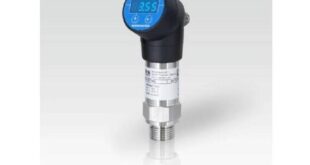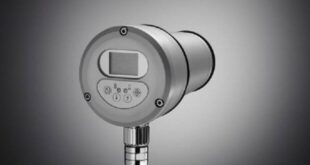Instrument Fittings: Unraveling the Depths of Types, Sizes, Materials, Connection Specifications, and More
Instrument fittings stand as the backbone of precision instrumentation systems, serving as the crucial links that determine the effectiveness and reliability of a multitude of industrial processes. In this exhaustive guide, we will embark on a journey through the intricate details of instrument fittings, exploring specific types such as bend fittings and tree fittings, unraveling the nuances of sizes, materials, and delving into the world of connection specifications, including male and female configurations.
II. Understanding Instrument Fittings
2.1 Definition and Purpose
Instrument fittings, at their core, are connectors designed to facilitate secure and efficient connections within fluid and gas systems. The precision and accuracy of these fittings are paramount, influencing the overall performance of the instrumentation they support.
2.2 Importance in Industrial Applications
From aerospace to pharmaceuticals, the reliance on precision instrumentation is ubiquitous. Instrument fittings play a pivotal role in ensuring seamless communication between components, contributing to the efficiency and reliability of industrial processes.
III. Types of Instrument Fittings
3.1 Compression Fittings
Compression fittings, characterized by their ferrule-based design, offer a reliable means of connecting tubes. We will explore the intricacies of compression fittings, understanding their applications and limitations in different industrial settings.
3.2 Flare Fittings
Flare fittings, with their coned ends, provide a unique sealing mechanism. Delve into the variations and applications of flare fittings, especially in industries where a secure seal is of utmost importance.
3.3 Bite-Type Fittings
Known for their bite-type ferrules, these fittings ensure robust connections. A closer look at bite-type fittings will reveal their unique advantages and applications in various industrial scenarios.
3.4 Threaded Fittings
Threaded fittings, offering versatility, are widely employed across industries. We will explore the diverse types of threads, materials, and applications for threaded instrument fittings.
3.5 Weld Fittings
Weld fittings, providing permanent connections, are critical in high-stress environments. Gain insights into the welding processes, material considerations, and applications of weld fittings.
3.6 Push-to-Connect Fittings
Efficiency is the hallmark of push-to-connect fittings. We will dissect the design principles, applications, and advantages that make push-to-connect fittings suitable for certain industrial setups.
3.7 Quick Connect Fittings
Quick connect fittings, enabling rapid assembly and disassembly, find applications in scenarios where time is of the essence. Explore the various types and understand their applications and benefits.
IV. Bend Fittings: Configuration and Applications
4.1 Introduction to Bend Fittings
Bend fittings play a pivotal role in redirecting tubing without compromising fluid flow. Explore the nuances of bend fittings, their configurations, and their significance in different industrial applications.
4.2 Types of Bend Fittings
Beyond the standard 90-degree bends, there are variations such as 45-degree bends and custom configurations. An in-depth look at different types of bend fittings and their applications will provide a comprehensive understanding.
4.3 Applications in Piping and Tubing Systems
Bend fittings find extensive use in various industries, including petrochemicals and manufacturing. Explore specific applications and understand how bend fittings contribute to efficient fluid conveyance in piping systems.
4.4 Considerations for Selecting Bend Fittings
Selecting the right bend fitting involves considering factors such as material compatibility, pressure ratings, and installation constraints. A thorough exploration of considerations will aid in informed decision-making.
V. Tree Fittings: Versatility in Instrumentation Layouts
5.1 What Are Tree Fittings?
Tree fittings play a crucial role in creating branching connections within fluid and gas systems. Understand the design principles, configurations, and the versatility that tree fittings bring to instrumentation layouts.
5.2 Configurations and Variations
Explore the various configurations of tree fittings, including Y-shaped and manifold-style fittings. Gain insights into how these configurations enhance flexibility in intricate instrumentation setups.
5.3 Advantages in Complex Piping Structures
In complex industrial systems, tree fittings provide a centralized and organized approach to fluid distribution. Delve into how these fittings contribute to the efficiency and reliability of intricate piping structures.
5.4 Applications in Hydraulic and Pneumatic Systems
From hydraulic power units to pneumatic control systems, tree fittings find applications across diverse industries. Examine real-world scenarios where tree fittings play a pivotal role in enhancing system performance.
VI. Instrument Fitting Sizes and Sizing Guidelines
6.1 Standard Sizing Parameters
Understanding standard sizing parameters is fundamental for selecting the right instrument fitting. Delve into nominal sizes, thread sizes, and other dimensions that define instrument fittings.
6.2 Metric vs. Imperial Sizing
Navigate the distinctions between metric and imperial sizing systems, considering the implications for compatibility and interchangeability in a global industrial landscape.
6.3 Understanding Nominal Size vs. Actual Size
The difference between nominal and actual sizes can significantly impact system performance. Gain clarity on how to interpret sizing specifications to ensure precise fitting selection.
6.4 Calculating Flow Rates Based on Fitting Sizes
Explore the relationship between fitting sizes and flow rates. Learn methods for calculating flow rates based on the size and type of instrument fittings employed in a system.
VII. Materials Used in Instrument Fittings
7.1 Stainless Steel
Stainless steel, known for its corrosion resistance, is a prevalent choice for instrument fittings. Delve into different grades, characteristics, and applications of stainless steel fittings.
7.2 Brass
Brass fittings strike a balance between durability and cost-effectiveness. Understand the applications and considerations when opting for brass instrument fittings in various industries.
7.3 Carbon Steel
Carbon steel fittings, valued for their strength, find suitability in high-pressure applications. Explore the variations, applications, and considerations when choosing carbon steel instrument fittings.
7.4 Plastics (Polyethylene, PTFE)
Plastic fittings offer specialized applications, including chemical resistance. Examine the properties and applications of plastic instrument fittings, including polyethylene and PTFE.
7.5 Specialized Alloys (Inconel, Monel)
In demanding environments, specialized alloys like Inconel and Monel provide exceptional performance. Uncover the unique characteristics and applications of instrument fittings made from these alloys.
VIII. Choosing the Right Instrument Fitting for Specific Applications
8.1 Matching Fittings to Instrumentation Requirements
Aligning instrument fittings with specific instrumentation requirements is critical. Learn how to assess and match fittings based on factors like pressure, temperature, and fluid compatibility.
8.2 Temperature and Pressure Considerations
Temperature and pressure are critical factors influencing the performance of instrument fittings. Explore guidelines for selecting fittings that can withstand the extremes of these parameters.
8.3 Corrosion Resistance Properties
Corrosion resistance is paramount in industries where exposure to harsh environments is common. Understand the corrosion resistance properties of different materials and how to choose fittings accordingly.
8.4 Fluid Compatibility
Different fluids pose unique challenges to instrument fittings. Gain insights into assessing fluid compatibility and selecting fittings that maintain integrity in the presence of specific substances.
IX. Installation Techniques for Instrument Fittings
9.1 Proper Installation Procedures
Correct installation is crucial for the reliability and longevity of instrument fittings. Explore step-by-step procedures for installing various types of fittings, ensuring leak-free connections.
9.2 Ensuring Leak-Free Connections
Leakage can compromise system performance and safety. Learn techniques and best practices to ensure leak-free connections when installing instrument fittings in different applications.
9.3 Considerations for Different Fitting Types
Each fitting type requires specific installation considerations. Delve into the nuances of installing compression, flare, bite-type, threaded, weld, push-to-connect, and quick connect fittings.
X. Maintenance Practices for Longevity
10.1 Regular Inspection Protocols
Periodic inspections are essential for identifying potential issues before they escalate. Establish comprehensive inspection protocols for instrument fittings to ensure optimal performance.
10.2 Preventive Maintenance Measures
Preventive maintenance extends the life of instrument fittings. Explore proactive measures, such as lubrication and corrosion prevention, to enhance the longevity of fittings in service.
10.3 Troubleshooting Common Issues
Issues such as leaks, corrosion, and improper connections can arise. Develop troubleshooting skills to identify, diagnose, and rectify common problems associated with instrument fittings.
XI. Connection Sizes and Types: Male, Female, and Others
11.1 Understanding Connection Sizes
Connection sizes are critical for compatibility and efficiency. Explore the significance of connection sizes and how they influence the overall performance of instrument fittings.
11.2 Male Connection Types
Male connections come in various forms, each serving a specific purpose. Examine the different types of male connections and their applications in instrumentation systems.
11.3 Female Connection Types
Female connections play a crucial role in creating secure and efficient seals. Dive into the variations and applications of female connections in instrument fittings.
11.4 Other Connection Types
Beyond the traditional male and female connections, there are other specialized connection types. Uncover the diversity of connection options available for instrument fittings.
XII. Applications of Instrument Fittings in Specific Industries
12.1 Oil and Gas Industry
In the oil and gas sector, instrument fittings play a critical role in ensuring the integrity of pipelines and control systems. Explore specific applications and challenges faced in this industry.
12.2 Chemical Processing
Chemical processing plants rely on instrument fittings for precise control and monitoring. Investigate how fittings contribute to the safe and efficient operation of chemical processing facilities.
12.3 Aerospace and Aviation
In aerospace and aviation, reliability is paramount. Understand the unique challenges and applications of instrument fittings in the construction of aircraft, spacecraft, and related systems.
12.4 Medical Devices
Precision is vital in medical device manufacturing. Explore how instrument fittings contribute to the production of accurate and reliable medical devices, including diagnostic equipment and surgical instruments.
12.5 Semiconductor Manufacturing
Semiconductor manufacturing demands precision and cleanliness. Uncover the applications of instrument fittings in the semiconductor industry, including cleanroom environments and vacuum systems.
XIII. Regulatory Standards and Compliance
13.1 ISO Standards
ISO standards set the benchmark for quality and performance. Understand the relevant ISO standards governing instrument fittings and ensure compliance in industrial applications.
13.2 ANSI Standards
ANSI standards provide guidelines for safety and interoperability. Explore ANSI standards applicable to instrument fittings, ensuring adherence to industry benchmarks.
13.3 DIN Standards
DIN standards are widely recognized in European industries. Familiarize yourself with DIN standards related to instrument fittings for seamless integration in global applications.
XIV. Innovations and Future Trends in Instrument Fittings
14.1 Miniaturization in Instrument Fittings
Advancements in miniaturization offer opportunities for space-saving solutions. Explore how miniaturized instrument fittings are shaping the future of precision instrumentation.
14.2 Advanced Materials and Manufacturing Processes
Innovative materials and manufacturing techniques enhance the performance and durability of instrument fittings. Stay abreast of the latest advancements driving the evolution of instrument fitting technology.
14.3 Integration with IoT and Smart Technologies
The integration of instrument fittings with IoT and smart technologies enhances monitoring and control capabilities. Explore how these advancements are revolutionizing instrumentation in various industries.
In conclusion, this comprehensive guide has delved into the intricate details of instrument fittings, leaving no stone unturned. From the basic types to specialized configurations like bend and tree fittings, sizing, materials, connection specifications including male and female types, and their applications in diverse industries, we have covered it all.
As a professional in the field or an enthusiast looking to deepen your understanding, this guide equips you with the knowledge to make informed decisions. Instrument fittings are not merely connectors; they are the lifelines of precision instrumentation systems. Stay ahead of the curve by leveraging the insights shared in this guide and contribute to the evolution of precision instrumentation in your respective field.
 Ontrose industrial corporation Inc. Engineering and supply of industrial projects
Ontrose industrial corporation Inc. Engineering and supply of industrial projects






